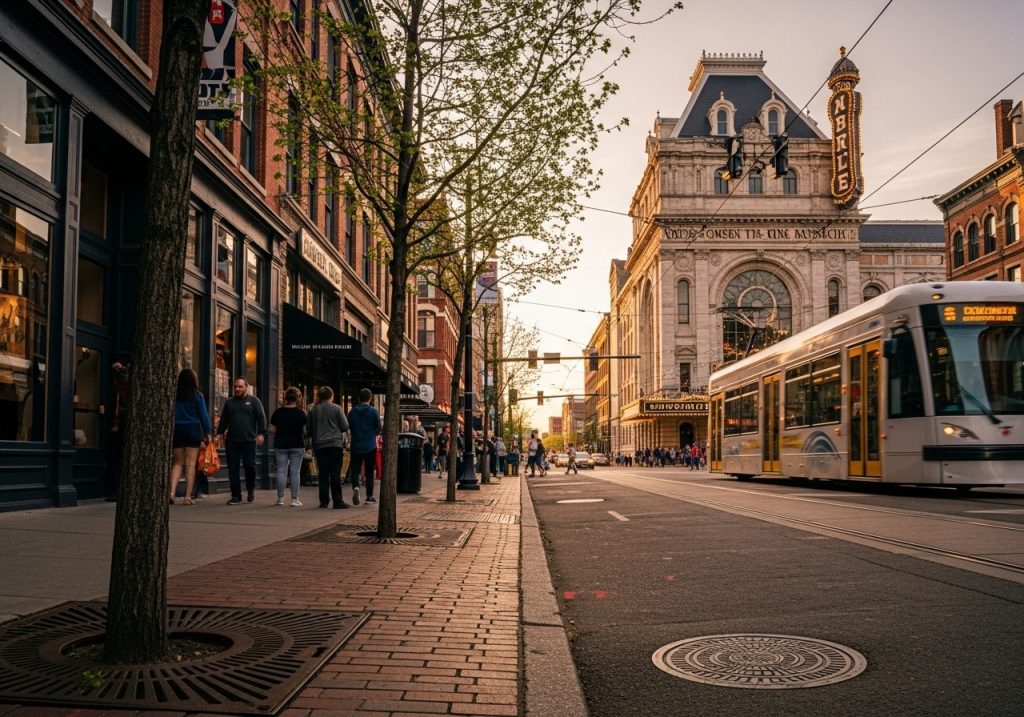
Cincinnati’s story is one of transformation—from a frontier outpost to a thriving industrial hub, and finally to a modern city celebrated for its innovation and cultural life. Its geography made it a bridge between North and South, industry and art, tradition and progress. German immigrants, African American activists, and waves of new settlers together shaped a community that remains proud, diverse, and dynamic.
Today, the city honors its past while embracing new challenges and opportunities. From the historic breweries of Over-the-Rhine to the futuristic architecture of the Cincinnati Art Museum, the Queen City continues to embody a rare blend of heritage and modernity. Cincinnati’s journey is not just a local story—it’s a reflection of the broader American experience: bold, inventive, and ever-evolving.
Cincinnati, located along the northern bank of the Ohio River, was founded in 1788 by Mathias Denman, Colonel Robert Patterson, and Israel Ludlow. Originally named “Losantiville,” the settlement occupied a strategic location at the confluence of the Licking and Ohio Rivers. In 1790, General Arthur St. Clair, governor of the Northwest Territory, renamed the town “Cincinnati” in honor of the Society of the Cincinnati—a group of Revolutionary War officers who had returned to civilian life. This name reflected the settlers’ admiration for Roman ideals of civic virtue and military service.
By the early 19th century, Cincinnati had become a bustling river town. Its position on the Ohio River allowed for easy trade with other frontier settlements and southern ports such as New Orleans. The introduction of steamboats in the 1810s dramatically accelerated commerce, helping Cincinnati grow from a modest village into one of the fastest-developing cities in the western United States. As settlers poured in, the city developed a distinct character marked by hard work, innovation, and cultural ambition.
During the 1830s and 1840s, Cincinnati earned the nickname “Queen City of the West” for its rapid expansion and cultural sophistication. It became one of the largest cities in the United States, serving as a gateway between the industrial North and the agrarian South. The city’s industries flourished, especially in meatpacking, which earned Cincinnati another nickname—“Porkopolis.” The slaughterhouses and meatpacking plants made it the leading pork-processing center in the nation, with products shipped by river and rail across the country.
The city also became a magnet for immigrants, particularly from Germany. These newcomers brought with them their brewing traditions, cultural societies, and architectural styles. By the mid-19th century, Cincinnati was home to one of the largest German-American populations in the United States. Their influence could be felt in the city’s neighborhoods, churches, and beer gardens—elements that still define Cincinnati’s cultural identity today.

HERE Cincinnati strives to provide the finest deals, products, and experiences in your local community. It’s all RIGHT HERE, and it’s all LOCAL.
If you notice something that you believe should be here, please let us know. And you’ll notice it soon HERE!
© Copyright 2025, HERECity.com